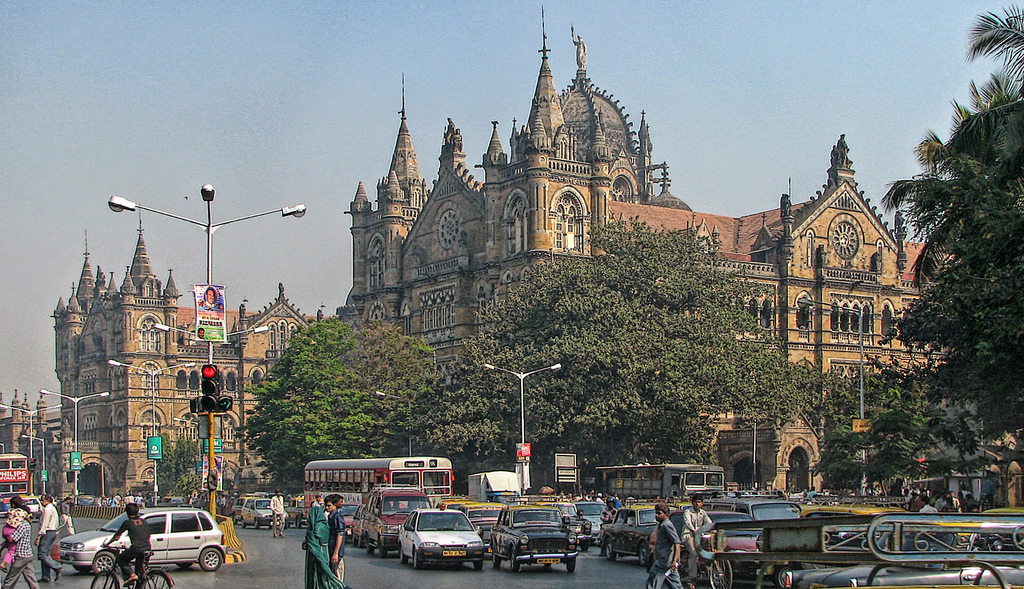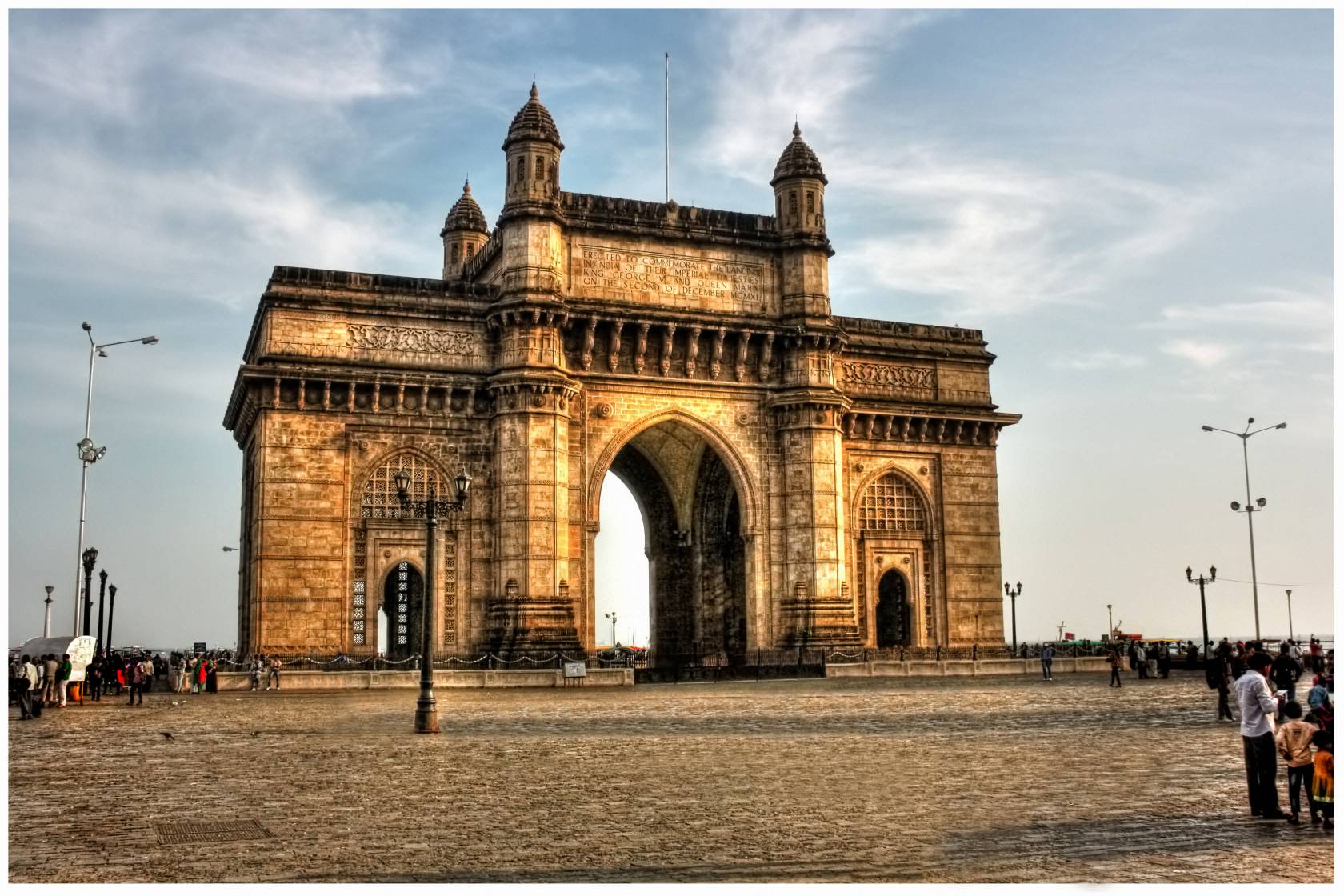The second most populous country in the world with China, India exceeds one billion inhabitants. And it is besides the omnipresence and the density of its population which swarms everywhere, night and day, which strikes, destabilizes, even attacks the traveler.
Beyond this shock, it is an incredible mixture of Middle Ages and modernity , which fascinates with so much wealth and culture!

Here a multitude of paradoxes intertwine at every moment: the crowd, the sublime magic of colors, mounds of rubbish, the beauty of the maharajahs’ palaces, but also processions of misery and beggars efflanqués.
The India is this glow that have the women dressed princesses-like flamboyant saris , mingled with the sound of deafening traffic jams and back and forth endless handcarts. It is at once the exhilarating splendor of the temples but also the insalubrity of the bazaarswhere vendors and customers swarm in a deafening cacophony. These are all those mysterious eyes that scrutinize you insistently in the street, all these sacred cows lying in the middle of crossroads that must not be touched, this spicy food of exception and this profusion of mystical beliefs !
This continent, charged with millennia of history is certainly for the enthusiasts, one of the 7 wonders of the world , in addition to its Taj Mahal.
For the reluctant, you say that all these excesses will inevitably contribute to destabilize you. But is not this the main purpose of a trip?
India has been inhabited by Muslims, Portuguese (Goa) and French (Pondicherry) but especially by the English. This last influence is still very strong: English is the second official language after Hindi, and there are no less than 1600 dialects and some 20 official languages . At the time of India ‘s independence in 1947 , the country was divided into two states: the Indian Union for Hindus (now 80% of the population) and Pakistan for Muslims.
This constitutional republic (1950) is divided into 28 states, and among the cities that resonate the most in each of us, we will remember New Delhi (the capital) , Jodhpur, Jaipur and Udaipur, located in the sublime Rajasthan, Agra, Benares, Calcutta, Madras, Pondicherry, Cochin, Goa or Bombay on which we will stop in this article.

Demographic bomb with nearly 15 million people, Mumbai is at 5th place of the most densely populated megacities worldwide and is expected to pass the 2nd rank with over 27 million inhabitants by 2015, just behind Tokyo.
Renamed Mumbai since 1996, it is both the capital of Hindu pilgrimage but also of Indian cinema. ” Bollywood ” is the world’s leading film producer with a thousand films a year, almost exclusively rosewater musicals seen by more than one billion potential viewers in Southeast Asia!
Bombay is also the oldest and holiest city in the South . Last but not least, the country’s economic, commercial and industrial nerve , where financial corporations, insurance companies, multinationals and other conglomerates, sit in gleaming skyscrapers (see Wikipedia) overlooking the Arabian Sea.
Stretching over 604 km2, Bombay is an island whose southern tip, Nariman Point, is occupied by the Business District. The megacity is slowly moving towards a new world, more attractive and air conditioned.
Unfortunately many still remain on the sidewalk: more than half of the population lives in slums, shaken by a major social unrest and religious tensions, in short, far removed from financial excesses.
While you will find few museums or historic sites, the city offers a lot. As everywhere in India, Mumbai’s main attraction is focusing on contradictions. From palatial mansions of Malabar Hill to Colaba’s trendy boutiques , you’ll suddenly tumble through the teeming neighborhoods near Churchgate or Victoria station . In the morning you can admire a game of cricket held on a shiny lawn in the city center, and at nightfall you ride on sidewalks strewn with corrugated huts under which whole families are crammed and sleeping. While luxury is close to misery, as everywhere else in India, but these arethese permanent contrasts that intoxicate, jostle and animate the mind and the heart.
It is true that when we see a woman sitting behind her husband on an ancestral moped, with her 2 infants at arm’s length, slaloming at a vertiginous speed among hundreds of busy pedestrians, boneless bikes, scary scooters, broken cars, crowded trucks, plows, cows, goats, dogs, all in dust, humidity, and hellish pollution …. we think that their life does not really care! Fortunately Hindus believe in the succession of reincarnations (samsara), which, in principle, has no beginning and no end. The only way out is to reach deliverance through meditation and devotion.
From Chhatrapati Shivaji International Airport, it takes a good hour to reach the city center by taxi, as the traffic is heavy. No rickshaw has the right to move outside the center. You can take the train (count 80 rupees, 1.2 €), but tiring and a little complicated. The taxi is by far the best solution: expect about 400 Rps on the counter, a little more than 6 €.

On the way to the center, we meet the slum of Dharavi (who visits!), The largest in the city with more than a million inhabitants. Thousands of barracks in jail, mingled with mountains of rubbish on which naked children walk naked. It is difficult to imagine the state of the place during the monsoon season, when diseases such as cholera or malaria must spread fast.
To have:
- The district of Colaba , where tourists , hotels , shops and restaurants are concentrated , crowds of touts, sellers and taxi drivers looking for the slightest opportunity to lighten you with a few rupees. Nice animation at night!
Here is also the famous monument “Gate of India “, on the seafront, which is a large arch of 26 meters high, built between 1911 and 1924, in honor of the arrival in Mumbai of English king George V. She faces a big busy square and frequented by tourists and sellers on the sly. The place is not of immense interest but allows to immerse oneself in the chaos of the city. It is also from here that the wharves depart for Elephanta Island.
Just opposite, you can admire the famous Taj Mahal Hotel (nothing to do with the mausoleum of the same name that is located in Agra), one of the largest palaces legendary of the East , the ultimate in luxury in the middle of this polluted jungle. Have a drink around the pool to appreciate the refinement of the place.
On leaving, take on the right and go along the pier. You will come across one of the most picturesque and unhealthy neighborhoods, a real electro shock compared to the ostentatious luxury of the Taj Mahal enjoyed a few minutes earlier.
Meet the famous Prince of Wales Museum, easily recognizable by its cupola of Mughal influence in an exotic garden. Beautiful collections of ancient sculptures and decorative arts from India, Nepal and Tibet.

- Marine Drive : A large waterfront promenade , in an arc, interesting for its art deco facades and new residential buildings a little flashy . Do not expect to find the Bay of Rio or Nice, but it is a healthy ride that Indians like the evening, on the sidelines of the tumult of the rest of the city.
- The Victoria Station , now called Chhatrapati Shivaji (! Sneezy), is an outstanding example of Victorian Gothic Revival architecture , resulting from the meeting of two cultures: the British architects worked with Indian craftsmen to include Indian architectural tradition to create a new style, unique to Bombay.
Do not miss the Crawford market for the pleasure of the eyes and your olfactory sense which are very solicited! Stalls of spices, meat, mountains of colorful fruits and vegetables but also sale of birds and monkeys.
A few steps away you will come across the Muslim quarter and its Jama Masjid mosque,whose immaculate domes are topped with tapered minarets. Crowd bath assured!
- Malabar Hill District:
Temple: Walkeschwar Mandir, often called Jain, interesting for its architecture and the activity of its special rituals . Nice moment of tranquility!
A visit is imperative at all costs: the district of the lower caste of the launderers, the Dhobi Ghats . Not easy to find; you have to take Mahalakshmi Road which leads to Banganga Tank. In the middle of this district of misery, there is a large basin for morning ablutions, surrounded by temples. In the direction of the sea, one sinks into tiny streets just over a meter wide, to find themselves among the basins of launderers . These workers wash and tremble like beasts, mountains of linen all day long, before being stretched out on the seashore, between rubbish, birds, kites and human waste! Here we have the feeling that time stopped, centuries ago.Scenes of life unimaginable !
As you can see, going through Mumbai without stopping there is missing one of the largest cities in the world. Colorful, fragrant, vibrant and touching with a rich and diverse history, you are sure to discover a “tropical London ” that will remain forever etched in your memory, whether you want to discover it as a whole or you stay isolated in neighborhoods where poverty is rarer, and there is!
Infos and advice in bulk:
– Visa required to enter India. Expensive and tedious to get! If you want to save yourself from queues that are often unsuccessful.
– No vaccine required but check that you are up to date. Needless to say, it is very important to be very vigilant with sanitary measures. The tap water was not drinkable .
– The black spot of Bombay: the hotels , which are 2 or 3 times more expensive than elsewhere in India for the same standing. Book in advance to hope to find a correct price.
– A myriad of low cost companiescompete today for Indian air corridors and offer very competitive prices for you to travel all over the country.
To read before departure :
SHANTARAM by Gregory David Roberts . Stunning masterpiece in the Bombay of the 70s. A film adaptation would be planned with Johnny Depp.
To see on DVD:
the classic of popular Indian literature many times adapted to cinema by Bollywood: “DEVDAS” in its latest version of 2002, directed by the young Sanjay Leela Bhansali . Kischissime and sublime! .
Nice trip !




